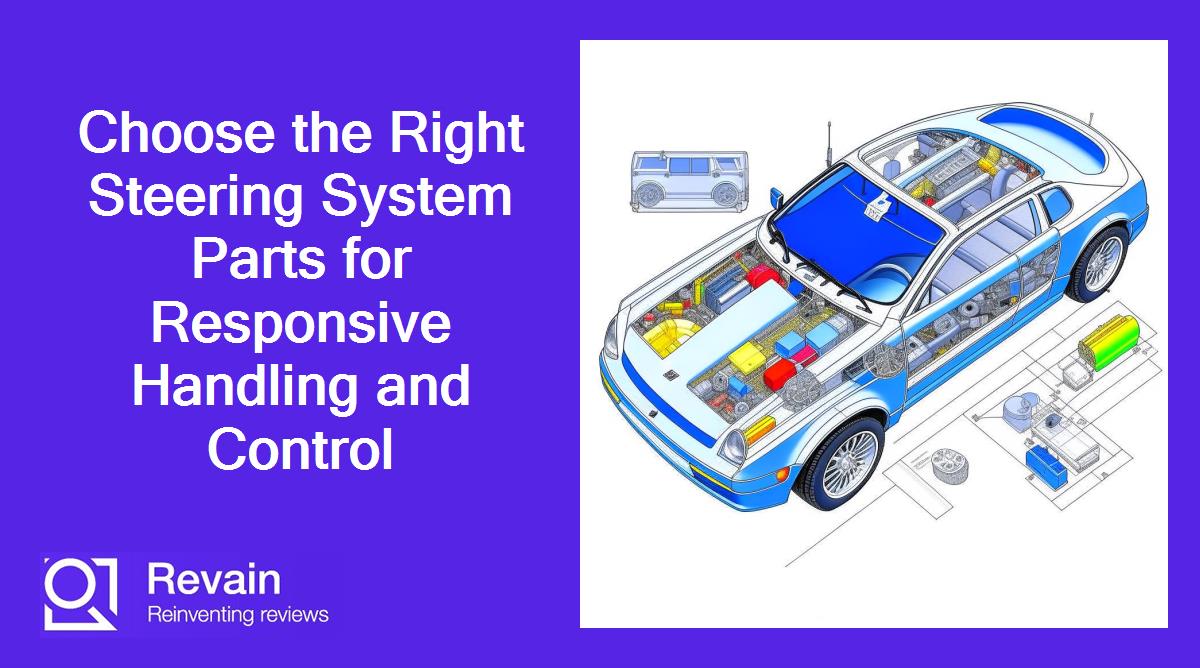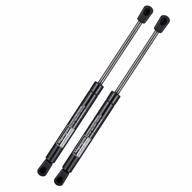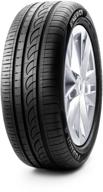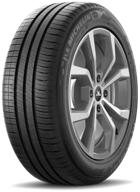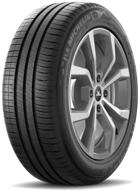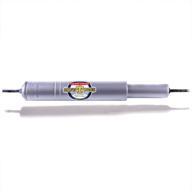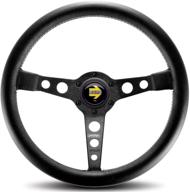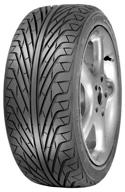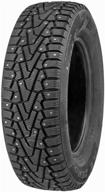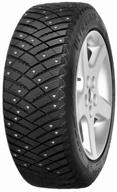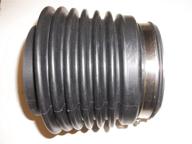Choosing the Right Steering System Parts for Your Vehicle
Selecting the proper steering system components for your car, truck, or SUV is important for safe handling, performance, and longevity. The steering system connects the driver to the wheels and allows you to control the direction of travel. Worn or inferior steering parts can reduce responsiveness and even lead to dangerous situations. This guide will help you understand steering system designs and choose appropriate replacement parts.
Types of Steering Systems
Most vehicles use one of three types of steering systems:
- Rack and pinion - Rack and pinion systems use a gear rack attached to the steering column which meshes with a pinion gear on the steering box. This transfers rotational motion into linear motion to turn the wheels. Rack and pinion designs provide precise steering and handling.
- Recirculating ball - Recirculating ball steering uses a worm gear attached to the steering column which rotates a nut containing ball bearings. The bearings transfer motion to the pitman arm. This type of steering is less precise but has a smaller turning radius.
- Worm and sector - Similar to recirculating ball steering, worm and sector systems use a worm gear driving a sector shaft attached to the pitman arm. This design is found mainly in older vehicles.
Another interesting products
Steering Component Materials
Steering parts can be constructed from various materials, each with their advantages:
- Steel - Durable and can be forged or cast but is heavier than other materials.
- Aluminum - Lightweight and corrosion resistant but not as strong as steel.
- Carbon fiber - Extremely light and rigid but more expensive than metal components.
Top products in 🚗 Steering System
Key Steering System Components
Some of the main parts to evaluate when replacing steering components include:
| Part | Function |
|---|---|
| Steering wheel | Connects to the steering column and allows driver input. |
| Steering column | Transfers motion from the steering wheel to the steering box. |
| Steering gearbox/rack | Converts rotational motion into linear motion to turn the wheels. |
| Tie rods | Connect steering knuckles to the rack or steering box. |
| Steering pump | Circulates power steering fluid for hydraulic assistance. |
Choosing Compatible Replacement Parts
When selecting new steering components, the most important factor is ensuring compatibility with your vehicle's year, make, and model. Consult your owner's manual or a parts retailer to find the proper parts. Mixing components from different systems or manufacturers may cause steering problems. For example, installing a high ratio quick steering rack in a truck designed for a slower standard rack can overload the steering pump.
Enhancing Responsiveness and Handling
Upgraded steering parts like quicker ratio racks, larger sway bars, and performance suspension components can provide sharper, more responsive steering. Lower profile tires on larger wheels also improves steering feel. Just make sure to balance enhanced performance with the intended usage of the vehicle.
Choosing the proper steering system components for your car or truck is crucial for safe, predictable handling. Carefully research parts designed specifically for your application before making any replacements or upgrades.
Similar products
Types of Steering Systems
There are three main types of steering systems used in automotive applications - rack and pinion, recirculating ball, and worm and sector designs. Each has distinct characteristics that affect steering feel and performance.
Rack and Pinion
Rack and pinion is the most common modern steering gear type. It consists of:
- A rack - a flat rod with gear teeth cut into it
- A pinion gear - attached to the end of the steering shaft
- Tie rods - connect the rack to the steering knuckles
As the steering wheel is turned, it rotates the pinion gear. This moves the rack sideways, pushing or pulling the tie rods and turning the wheels.
Benefits of rack and pinion steering:
- Direct steering feel with precise control
- No slack or looseness in the steering
- Responsive steering input
- Compact design
Recirculating Ball
Recirculating ball steering uses a worm gear attached to the steering column. This meshs with a nut containing ball bearings. As the worm gear turns it circulates the ball bearings, causing the nut to rotate. The nut is attached to the pitman arm which steers the wheels.
Features of recirculating ball steering:
- Indrecit steering feel from multiple friction points
- Prone to wear and looseness over time
- Can be adjusted to remove slack
- Smaller turning radius than rack and pinion
Worm and Sector
Similar to recirculating ball, worm and sector steering uses a worm gear attached to the steering column. This meshes with and drives a sector shaft connected to the pitman arm.
- Used mainly in older vehicle designs
- Looseness can develop from worm gear wear
- Larger turning radius than other designs
- Heavy steering feel
Understanding these steering system designs allows you to evaluate characteristics like steering feel, precision, and maintenance when selecting components.
Steering Component Materials
The materials used to construct steering system parts have an important influence on their properties and performance. The three main materials used are steel, aluminum, and carbon fiber.
Steel
Steel is the most common metal used for steering components due to its strength and durability. Types of steel include:
- Mild carbon steel - Used for stamped, pressed, and forged components. Durable but heavy.
- High carbon steel - Stronger but more brittle. Used for precision gear parts.
- Alloy steel - Alloyed with chromium, nickel, molybdenum for increased strength. Used for pitman arms, steering shafts.
Advantages of steel steering components:
- High strength and impact resistance
- Ability to be heat treated for increased hardness
- Good fatigue life
- Low cost manufacturing
Disadvantages include heavy weight and corrosion potential.
Aluminum
Aluminum steering parts provide:
- Light weight - up to 50% less than steel
- Corrosion resistance
- Good machinability
Aluminum is not as strong as steel and is more expensive. It is often used for steering wheels, columns, and suspension components where reducing unsprung weight is beneficial.
Carbon Fiber
Carbon fiber steering components offer:
- Extremely low weight - up to 75% less than steel
- Exceptional strength-to-weight ratio
- Improved steering feel and response
Disadvantages include high cost and lower impact strength versus metal. Carbon fiber is found in high-end sports cars and racing applications.
Understanding the properties of steering materials allows the selection of appropriate components based on needs for durability, precision, strength, weight savings, and cost.
Main Steering System Components
The steering system converts driver inputs into turning the wheels to control the vehicle's direction. This is accomplished through several important components.
Steering Wheel
The steering wheel connects to the steering column and allows the driver to input directional changes. Most cars and trucks use 14-16 inch diameter wheels. Performance models may use smaller diameters for quicker response.
Steering Column
The steering column transfers motion from the steering wheel to the steering gear. It houses the shaft connecting the wheel to the gears and allows adjustments for tilt and length. Collapsible columns compress in a crash to protect the driver.
Steering Gearbox/Rack
The steering gear converts the rotational motion of the steering wheel into lateral motion to turn the wheels left or right. Most modern cars use a rack and pinion gearset. Trucks often use a recirculating ball gearbox. Formula 1 race cars use a highly precise rack system.
Tie Rods
Tie rods connect the steering arm or knuckle on each wheel to the steering gear. This transfers motion to pivot the wheels when the steering gear is actuated. Tie rods come in adjustable, replaceable assemblies with ball joints on each end.
| Tie Rod Type | Description |
|---|---|
| Inner tie rod | Connects to the steering gear or rack |
| Outer tie rod | Connects to the steering knuckle or arm |
Steering Pump
The steering pump is part of the power steering system. It uses hydraulic pressure to multiply the driver's efforts at the steering wheel, reducing the force needed to turn the tires. This allows easy low-speed maneuvering and precise control.
Understanding how these core steering components work together is useful when diagnosing issues or replacing worn parts.
Key Factors When Selecting Steering Parts
Choosing the right replacement or upgrade steering components requires carefully considering a few key factors:
Compatibility
The most important factor is compatibility with your vehicle's make, model, and year. Mixing parts from different steering systems or manufacturers may cause poor handling or failure.
- Consult your owner's manual or parts retailer to find compatible parts.
- Be aware of differences like steering rack ratios and spline sizes.
- Don't assume universal or generic parts will properly fit.
Driving Style
Select parts tailored for your typical driving and usage:
- Street use - focus on responsive steering with good road feel.
- Towing/hauling - choose robust components designed for heavy loads.
- Off-road - pick heavy duty parts able to withstand impacts.
- Performance driving - look for improved response and control at speed.
Performance Goals
Upgraded components can provide:
- Quick ratio racks - faster steering response.
- Larger sway bars - flatter cornering.
- Shorter columns - improved feel and feedback.
- Stiffer bushings - less flex and slop.
But avoid overtly compromising streetability and drivability.
Budget
High end and exotic materials like carbon fiber and titanium offer exceptional performance but at very high costs. Less expensive options may suffice:
- Quality replacement factory parts
- Mid-range performance branded components
- Rebuilt steering gears or racks
Properly assessing your needs and selecting compatible steering components that match your budget and goals is key to an improved driving experience.
How To Choose The Right Steering System For Your Car?
Choosing the right steering system for your car can be a daunting task, but it's important to ensure that you have a reliable and responsive system that meets your needs. Here are some factors to consider when choosing a steering system:
- Compatibility: Ensure that the steering system you choose is compatible with your vehicle's make and model. You may need to look for specific models that are designed for your vehicle.
- Steering ratio: The steering ratio determines how much the steering wheel must be turned to achieve a certain degree of turn in the wheels. Choose a steering ratio that suits your driving style and needs.
- Mounting location: Consider the mounting location of the steering system. Some systems may require modifications to your vehicle's frame or suspension.
- Type of use: Consider the type of driving you will be doing. If you plan to use your car for racing or performance driving, you may need a different steering system than if you plan to use it for daily commuting.
- Brand reputation: Look for brands with a good reputation for quality and reliability. You don't want to skimp on a critical component like your steering system.
- Power steering: Most modern cars have power-assisted steering, which makes it easier to turn the steering wheel. There are three types of power steering: hydraulic, electric, and hybrid electro-hydraulic. Choose the type that suits your needs.
- Consult with experts: Every vehicle is unique, and it's essential to consult with experts or professionals in the field to ensure you make the best decision for your specific vehicle. By considering these factors, you can find a steering system that meets your needs and provides a reliable and responsive steering experience.
Electric Power Steering
Electric power steering (EPS) is a type of power steering system that uses an electric motor to assist the driver in turning the steering wheel. Here are some key points about electric power steering:
Overall, electric power steering is a reliable and efficient system that provides drivers with a smooth and enjoyable steering experience.






